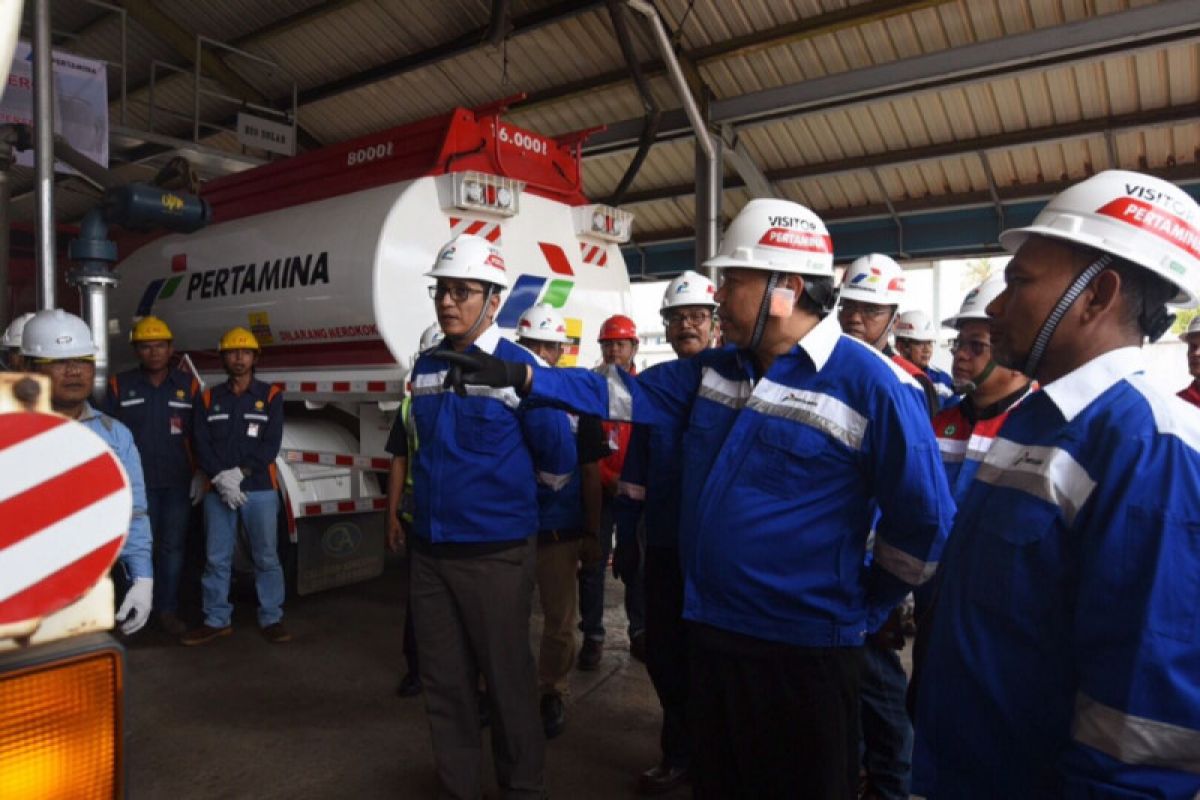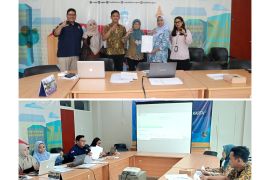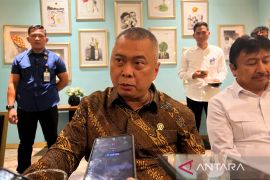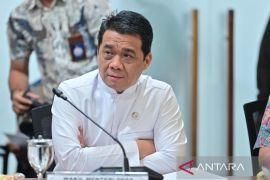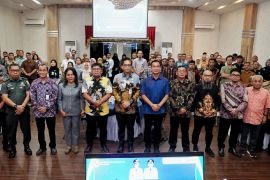"At least four strategies are being prepared," Djoko said here on Wednesday night.
The first is the use of biodiesel 20 (B20) in all gas filling stations of the state-owned energy company PT Pertamina and by buying the contractors` share of oil production under the production sharing contracts, he said.
B20 is a mixture of automotive diesel oil with palm oil that makes up 20 percent for transportation fuel.
The country would be able to significantly cut its imports for oil fuel if the B20 program is a success and the oil share of foreign contractor is all used in the country, Djoko said.
Meanwhile, the government will maximize the program of using goods and services having higher local content in all oil and gas projects, and LC (letter of credits of all companies buying products in the energy sector both in coal and other sectors have to be paid in the country .
"LC opened abroad would be moved to the country. That means we will earn much more dollar," he said.
Earlier, the Energy and Mineral Resources (ESDM) Ministry said deficit in the oil and gas sector in 2018 is expected to be smaller than in 2017 .
Deputy Minster of ESDM Arcandra Tahar said in the first half of 2018, state revenues from oil and gas lifting were valued at US$6.57 billion.
Meanwhile, oil and gas exports were valued at US$5.89 billion as against imports of US$12.73 billion in the same period.
"With state revenue plus exports against imports , the deficit in the oil and gas sector was only US$0.27 billion," Arcandra said.
In the whole of 2017, the deficit in oil and gas sector was US$1.55 billion with revenues at US$9.92 billion and exports valued at US$10.8 billion as against imports of US$22.27 billion.
"Therefore, altogether, the deficit in the oil and gas sector is slightly lower than in 2017," he said.
He said currently the oil and gas sector is still one of the main contributors to the state income.
The Finance Ministry said in the first half of 2018, oil and gas contributed 34 percent to non tax state income (PNBP).
The Central Bureau of Statistics (BPS) said earlier this week Indonesia recorded a trade deficit of US$1.02 billion in August, mostly on oil and gas imports.
The deficit in August, however, was much lower than the five years peak of US$2.03 billion the previous month.
The country`s exports were 2.9 percent lower month-to-month (mtm) at US$15.82 billion, and imports were valued at US$16.84 billion or 7.97 percent smaller.
So far this year , the country has recorded trade surpluses only in March and June.
The government has been more serious in curbing an increase or reducing its current account deficit which has been blamed for the weak rupiah against the U.S. dollar. The government has announced plan to shelve a number of big projects not yet reaching the financial close to reduce imports of materials needed in the projects.
Indonesia`s current account deficit widened 67.4 percent to US$8 billion in the second quarter of 2018 from a US$4.7 billion a year earlier. It was the largest current account deficit since the third quarter in 2014, as the goods account surplus narrowed sharply to US$289 million from US$4,835 million.
In contrast, the services shortfall narrowed to US$1,790 million from US$2,223 million. Additionally, the primary income deficit was down to US$8,155 million from US$8,310 million and the secondary income surplus increased to US$1,627 million from US$993 million.
Reporting by Afut Syafril Nursyirwan
Editing by Albert Saragih, Fardah Assegaf
Reporter: Antara
Editor: Suharto
Copyright © ANTARA 2018
